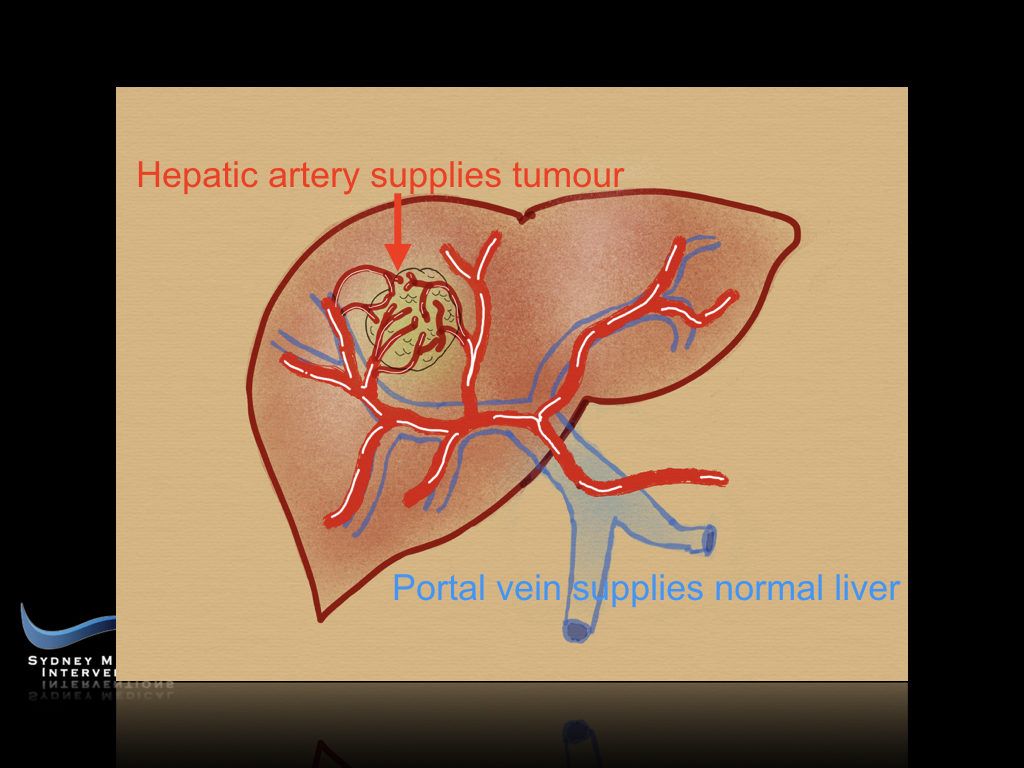If you’ve known anyone with liver cancer, you may know it can be a tricky cancer to treat. Often by the time it’s diagnosed, it has progressed so far it cannot be removed surgically.
However, there are still options for treatment, thanks to Interventional Radiology. In fact, Interventional Radiology may also enable “non-operative” patients to become operative candidates
Embolisation for liver cancer: How it works
Embolisation is a liver cancer treatment that shrinks tumours
by using their blood supply against them. The procedure has been successful in patients who have inoperable primary (arising from the liver) or secondary (spreading to the liver from another location) tumours, as well as patients who need a break between chemotherapy treatments.
Embolization involves injecting substances into the blood vessels supplying the tumour. This can then deliver chemotherapy or radiation directly to the tumour itself, with minimal exposure to other organs within the body. This then increases the tumour kill and minimises side effects.
Types of liver tumour embolisation
Depending on the tumour’s size, location and type, interventional radiologist Dr Albert Goh may choose between three approaches to shrink any tumours present. Each approach is minimally invasive, for patients with non-operative cancer.
Liver directed therapy
The liver has two blood supplies – normal cells are fed by branches of the portal vein, whereas cancer cells grow thanks to supply from branches of the hepatic artery.
During this procedure, a thin, flexible tube (a micro catheter, less than 0.7mm in diameter) is inserted into an artery via a small puncture in the upper thigh. Using special imaging, Dr Goh guides the microcatheter to the hepatic artery branches in the liver, and injects small particles which are then delivered directly to the tumour. The 2 main forms of liver directed therapy are Radioembolisaton and Chemo-embolisation.
Radioembolisation
This procedure is similar to hepatic artery embolisation, but Dr Goh injects radioactive microspheres into the arteries supplying the tumour that deliver radiation directly to the cancerous area.
The procedure is beneficial for patients with inoperable tumours or those whose tumours are resisting other treatments.
Chemoembolisation
This approach combines embolisation with chemotherapy. Once the micro catheter is guided into the artery supplying the tumour, a chemotherapy drug is injected, followed by an embolic agent to increase the “dwell time” of the chemotherapeutic agent in the liver.
Although chemotherapy is a common cancer treatment, its side effects on normal healthy tissue are problematic. This approach maximises the local dose to the tumour and minimises toxicity to the rest of the body.
Portal vein embolisation
Portal vein embolisation is used to give patients a chance to become disease free. In some patients, removal of the portions of the liver with tumour in them would be potentially curable. However, the patient would not be able to survive with the small residual volume of liver.
This treatment blocks the portal vein to one side of the liver to promote growth in the other. This remarkable treatment essentially helps the liver grow more healthy tissue, so when the cancerous area is removed, it can still support life.
It transitions patients from being non-operable to becoming operative candidates.
Get in touch!
If you are living with liver cancer and would like to explore your treatment options, contact us at Sydney Medical Interventions for further information.

